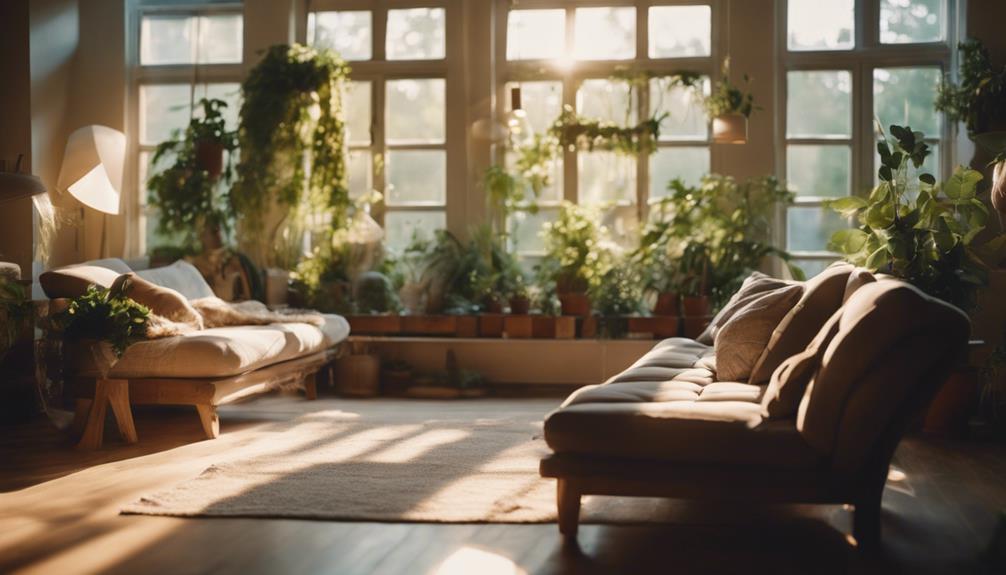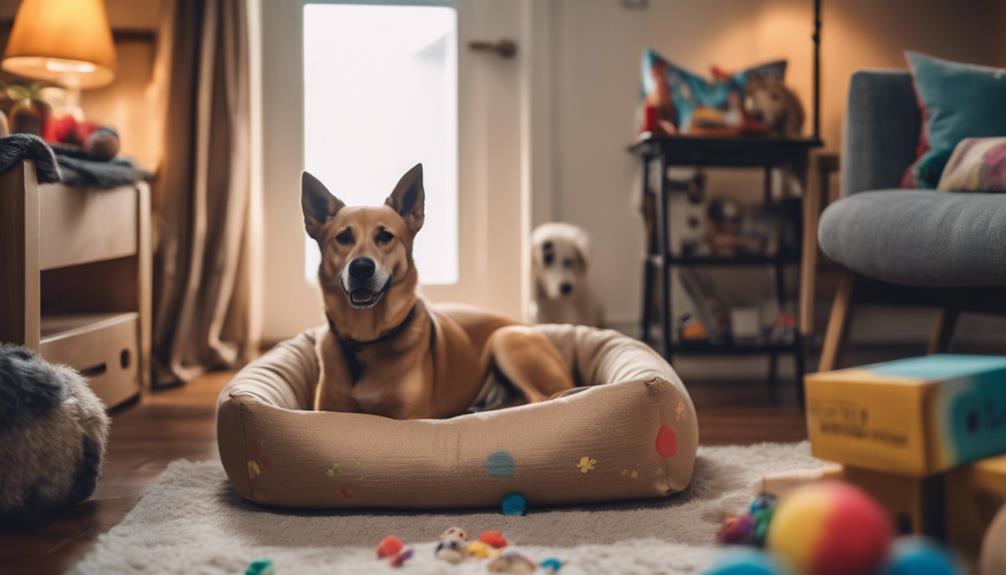Rebuilding your life after a disaster involves reconnecting with your home and community. You can choose to rebuild in familiar surroundings, which often supports emotional recovery and lowers costs. Temporary housing options like vacation rentals or extended stay hotels can provide comfort during this shift. Personalizing your space with cherished belongings helps create a feeling of home. It's also essential to prioritize mental health by joining support groups and establishing routines. Community resources can provide critical assistance as you move forward. By exploring these strategies, you're on a solid path to recovery and renewal. More insights await to guide your journey.
Rebuilding Vs. Relocating
When faced with disaster, you often have to choose between rebuilding your home or relocating, and understanding the benefits of each option can help guide your decision.
Rebuilding is generally less expensive, especially if your homeowner's insurance covers some costs. Staying means you'll maintain your community ties, which can ease your emotional recovery.
On the other hand, relocating involves repair and moving expenses, alongside the uncertainty of future disasters in your new area. Familiarity with your surroundings can markedly reduce stress during recovery, as your local support network plays an essential role.
Temporary Housing Options
After deciding whether to rebuild or relocate, you'll need to explore temporary housing options that can provide immediate relief during your recovery process. Consider the following possibilities:
| Housing Option | Pros |
|---|---|
| Hotels | Short-term convenience |
| Vacation Rentals | Often furnished; home-like feel |
| Traditional Rentals | Flexibility in duration and furnishings |
| Extended Stay Hotels | Amenities like kitchen facilities |
| Mobile Homes | Affordable and quick setup |
Each option has its advantages, depending on your needs and budget. Hotels work best for short stays, while vacation rentals can offer a more home-like atmosphere. Traditional rentals provide flexibility, making them a practical choice during recovery. Assess your situation carefully to find the right fit!
Creating Comfort in Transition

Creating a sense of comfort in temporary housing is essential for easing the emotional strain during your recovery.
Personalize your space by unpacking belongings and displaying cherished items like family photos. This small act transforms a sterile environment into a place that feels more like home.
Incorporate feel-good decor that uplifts your mood, such as soft textiles or familiar colors. If you're in a hotel or rental, consider using temporary furnishings that reflect your style.
Remember, this is a short-term situation, so focus on creating a welcoming atmosphere. Engage in daily routines, cook familiar meals, or enjoy activities that bring you joy.
These steps can greatly enhance your sense of stability during this challenging change.
Mental Health During Recovery
Maintaining your mental health during recovery is essential, as it directly impacts your ability to cope with the challenges that arise after a disaster. Engaging in supportive activities and leaning on community resources can greatly aid your emotional well-being. Here are some strategies to take into account:
| Strategy | Benefits | Tips for Implementation |
|---|---|---|
| Join a Support Group | Reduces isolation | Look for local or online groups |
| Practice Mindfulness | Lowers stress and anxiety | Try meditation or deep breathing |
| Establish Routine | Creates stability | Set daily goals for yourself |
Moving and Furniture Tips

Managing the logistics of moving and finding the right furniture can greatly impact your recovery experience after a disaster.
Start by using proper packing materials to protect your belongings during transit, and label boxes clearly to make unpacking easier. Disassemble large furniture to simplify transport and consider hiring professional movers for particularly heavy or fragile items.
Plan your moving day in advance to minimize stress and guarantee everything flows smoothly.
If you need quick access to essential furnishings, look into CORT Furniture Rental, which offers customizable rental packages tailored to your specific needs.
This can help stretch your insurance payouts and provide the comfort you need during your recovery journey. A well-organized move aids in re-establishing a sense of home.
Community Support Initiatives
Community support initiatives play an essential role in helping individuals and families recover after a disaster, providing vital resources and connections during challenging times.
These initiatives foster a sense of community, encouraging collaboration and resilience. Engaging with local organizations can greatly ease your recovery journey.
Here are some key ways you can benefit:
- Access to food and shelter: Local food banks and shelters offer immediate assistance.
- Emotional support: Support groups provide a safe space to share experiences and feelings.
- Volunteering opportunities: Getting involved helps you connect with others and rebuild your community.
Design Trends for Recovery

Design trends for recovery often focus on creating a comforting and cohesive environment that promotes emotional healing and stability.
You might consider a monochrome color palette, which enhances the perception of space and allows for personal touches without overwhelming the senses. This simplicity can foster a sense of calm, making it easier to adjust after a disaster.
Incorporating various textures and materials adds visual interest, so don't shy away from mixing fabrics and finishes. Personal items like family photos or cherished mementos can further ground your space, helping you feel more at home.
Frequently Asked Questions
What Financial Assistance Is Available for Disaster Recovery Beyond Insurance?
You can explore grants from local government agencies, non-profit organizations, and federal assistance programs like FEMA. Additionally, community fundraising efforts or low-interest loans may provide extra financial support during your recovery process.
How Can I Find Local Support Groups for Disaster Survivors?
You can find local support groups for disaster survivors by checking community centers, churches, and online platforms like Facebook or Meetup. Don't hesitate to reach out; many organizations are enthusiastic to help during tough times.
What Are the Long-Term Effects of Displacement on Mental Health?
Displacement distorts daily life, dismantling your sense of security and stability. It can lead to lingering loneliness, anxiety, and depression. You might find it tough to reconnect, rebuild relationships, and regain emotional equilibrium over time.
How Can I Safely Store Belongings During the Rebuilding Process?
You can safely store belongings during rebuilding by using climate-controlled storage units, packing items in sturdy boxes, and labeling everything clearly. Make certain valuable or fragile items are well-protected to prevent damage during the process.
What Resources Exist for Children Coping With Disaster Recovery?
You can find resources like counseling services, support groups, and educational materials tailored for children. Local organizations often offer activities and workshops that help kids express their feelings and connect with peers during recovery.
How Can People Rebuild Their Lives and Find a Permanent Home After a Disaster or Renovation?
After a disaster or renovation, people can find temporary home during renovations by seeking assistance from local government or non-profit organizations. They can also explore options like renting or staying with friends and family. To rebuild their lives and find a permanent home, it’s important to stay positive and be open to various resources and support networks.
Conclusion
As you commence your journey to rebuild, remember that every step forward is like planting a seed of hope in your heart.
Whether you choose to rebuild or relocate, focus on creating a space that feels like home, even in temporary housing.
Lean on your community and embrace the support around you; it'll be the sunlight nurturing your growth.
With time and care, you'll turn this chapter into a beautiful new beginning, blooming where you're planted.










